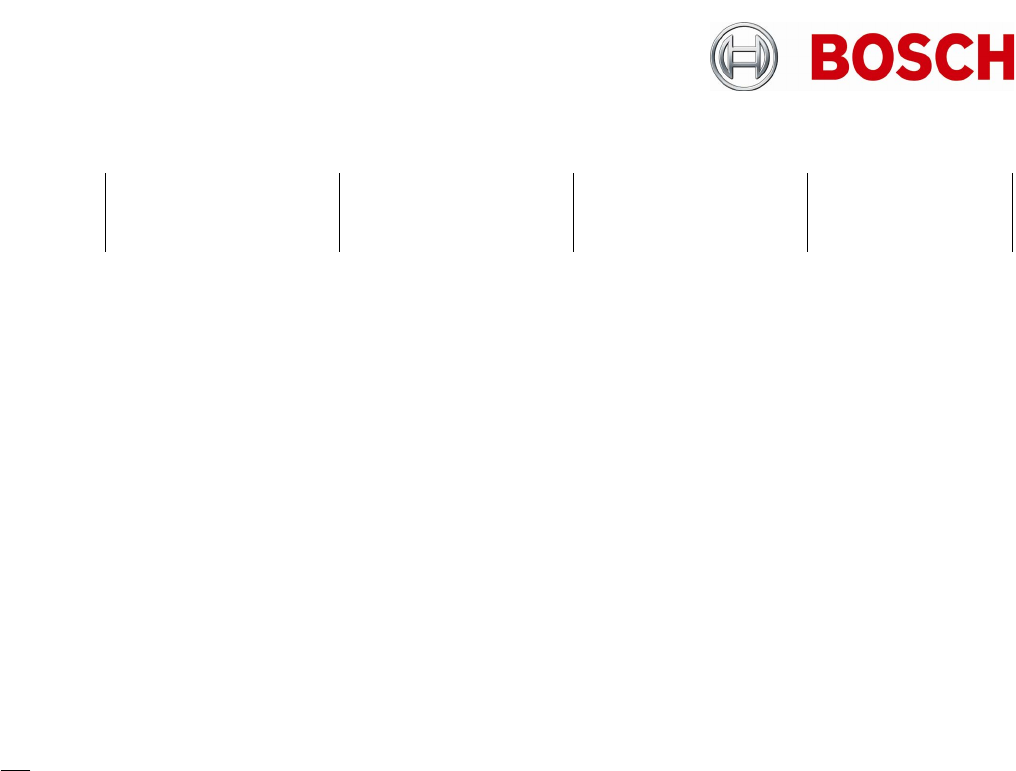
Security Systems
From Telephone Nuremberg
STVC/PRM
Product Management +49 911 93456 0 24.01.2013
14
BOSCH and the symbol are registered trademarks of Robert Bosch GmbH, Germany
• RTSP audio connections use 8 kHz timestamps to allow audio with standard media players
like QuickTime or VLC.
• NTCIP is supported for all AutoDome series.
• Audio is possible in 16 kHz quality for live connections.
This mode requires approx. 500 kbps for such an audio stream.
Recording of 16 kHz audio is also possible.
• UPnP discovery support can be enabled or disabled.
• Extended multi-connectivity by increasing RCP+ connections to 100 minimum.
• Temperature values (current and maximum) included in system overview for applicable
products with temperature sensor.
• Decentralized event pre-processing is possible via Alarm Task scripting.
Devices can register for RCP messages and payload as input for script actions.
• Implementation of a licensable function to increase the bandwidth limitation for H.264 BP+
encoded video from 1.2 Mbps up to 2 Mbps.
H.264 BP+ requires CAVLC entropy encoding which is handled by the built-in CPU.
The required computational power for CAVLC at 2 Mbps does not allow for more additional
functions than MOTION+ on the CPU.
Using this mode needs special care for the setup of a camera or encoder to ensure full
functionality.
Please consider the following restrictions to avoid erroneous behaviour:
Do not enable
o JPEG encoding in any way, including JPEG Posting or JPEGs in alarm emails
o iSCSI or SD card recording, neither local nor remote
o FTP export of recordings
o AES encryption
Do not allow
o Access to the second stream (H.264 MP)
o Access to the JPEG stream
o Access to RTSP streams
If necessary, access-protect the devices with passwords or disable the relevant ports.
In case of less than the 2 Mbps being required there may be sufficient computational power
left for an additional function. The needed performance is dependent on various settings and
must be very carefully evaluated using the real environment.
CPU load must be ensured to be continuously below 90% to keep the system functional.
Exceeding the available computational power will cause undeterminable behaviour,
including the risk of loosing video recording of multiple GOP lengths.

















